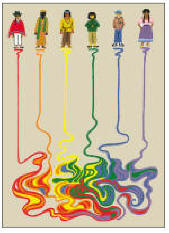|
Adoption Resource Center of Connecticut 78 Eastern Boulevard Glastonbury, CT 06033
...helping to blend families... |
No Longer Foreign: Agency Helps Families With
Adoptions In Other Countries By Any day now, Ria Van Hoof will be going to When Van Hoof and her husband,
Both daughters were also adopted in "The biggest difficulty with international adoption is
that you have no control," said Van Hoof, of That's where As executive director of the Adoption Resource Center of
Connecticut, she helps families who are adopting here and abroad get
through the tangle of bureaucracy that accompanies the process, and through the
emotional ups and downs. "We don't actually place children. There are a lot of
really good adoption agencies, but people don't know how to find them,"
Rearick said. "What we do is help people find the good agencies, steer
them away from the less than reputable, and provide information and
support." The center, a non-profit agency based in "It's a roller-coaster ride. There will be highs and
lows," Rearick said. In the Van Hoof attended a talk by a therapist who discussed
bonding issues known as attachment. "It's very helpful," she said.
"It lets you know that if you run into trouble, there is someone out there
that can help you." The most popular countries for international adoption are "The majority of those placements go very well,"
Rearick said. "It's the ones that don't that you hear the most
about."
The The center has a staff of five, including licensed clinical
social workers and a marriage and family therapist. There is no charge for
support-group meetings. A recent seminar for waiting parents was led by veteran
adoptive parents who have come through successfully. Bruce Putterman and his wife, Teri
Bayer, of "They gave us some insight," Putterman
said. "For example, in Putterman said he enjoyed the camaraderie of meeting other families
who have adopted children from "Our families run the rainbow," Rearick said. The resource center also works with parents after the
adoption is complete. "Adoption is a lifelong process," said Rearick. "It's not just bringing the child home. Lots of
agencies can do that. Lots of issues arise as they grow up. We work with people
now so that they can successfully prepare for questions their children will ask
them and what society will throw at them." As the girls get older, Ria Van Hoof said the family's trip to "This is how they got here, and I think it's important
for them to understand what went on and to see it themselves," she said.
She believes their presence will ease the transition for the new little sister,
who is 3 years old and knows only Chinese. "I don't think they will have
any problems communicating. I have total faith in the kids."
|

